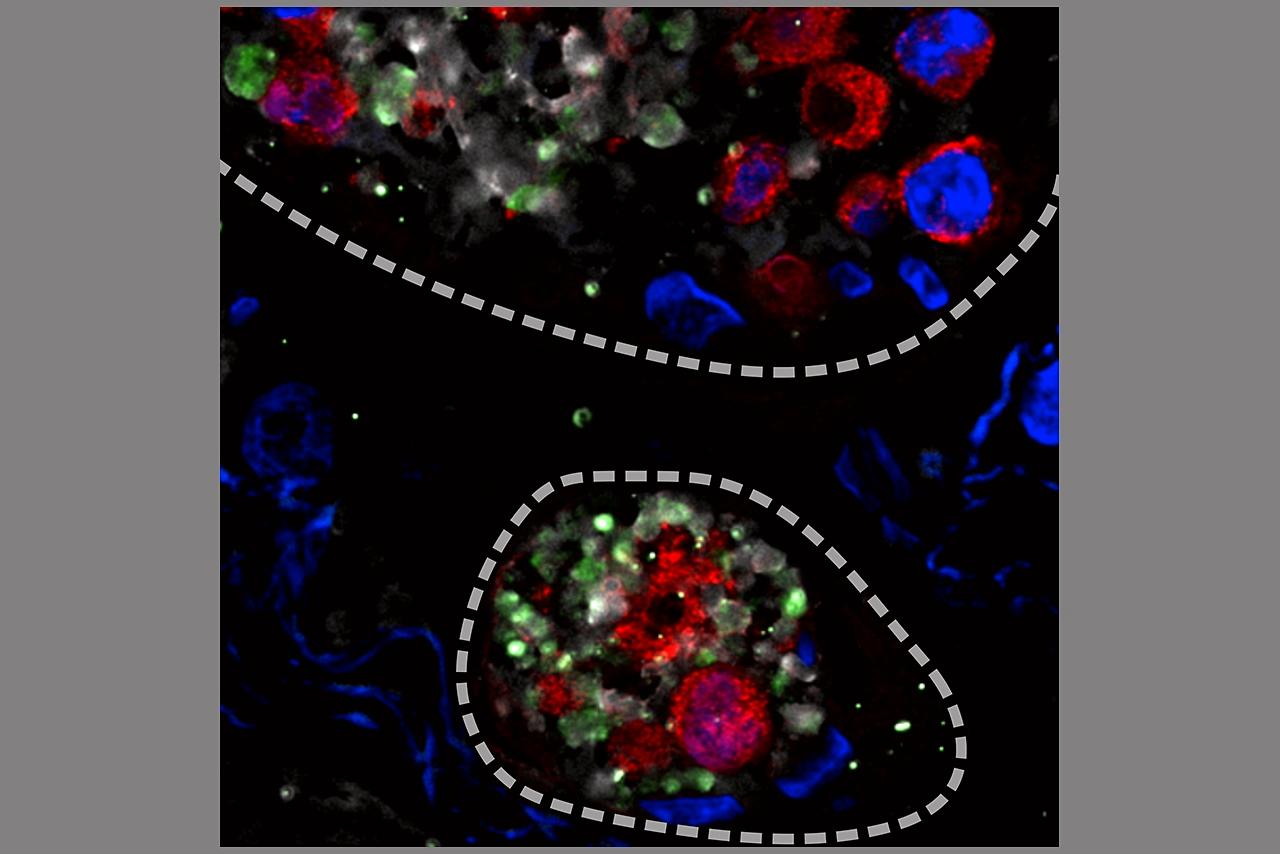In a paper published in the scientific journal Circulation, the team around the DZHK scientists Leo Nicolai, Alexander Leunig, Kami Pekayvaz, and Konstantin Stark from the Medical Clinic and Polyclinic I at the LMU Klinikum München was able to uncover a pathophysiological interface between changes in the pulmonary vessels and thrombotic complications. The pulmonary vessels of critically ill COVID-19 patients showed multiple thromboses in the smallest blood vessels. The researchers were also able to detect such vascular occlusions in the heart and kidney. The thromboses consisted mainly of blood platelets and activated inflammatory cells, so-called neutrophil granulocytes. The occlusions seen in this process are caused by the fact that inflammatory processes trigger activation of blood coagulation and platelets, intended to prevent the spread of viruses and bacteria in the body. However, such vascular occlusions also impair the blood supply to the tissue - which contributes to lung failure - and a systemic tendency to thrombosis develops.
The researchers used multidimensional fluorescence flow analysis to show that highly activated neutrophil granulocytes and platelets can be found in the blood of COVID-19 patients requiring respiratory support and who have lung failure. Both cell types activate each other, which ultimately leads to vascular occlusion in the lungs. An essential component of this occlusion formation is the so-called NETs (neutrophil extracellular traps). These net-like structures of DNA and granulaproteins of neutrophil granulocytes stabilize the blood clot. This initial local process in the lungs also leaves its mark in the blood, where blood clotting is strongly activated. As a result, an increased systemic tendency to thrombosis manifests. "These findings contribute to a better understanding of the pathophysiological mechanisms in COVID-19," says Konstantin Stark. "Immunothrombosis is a promising approach in the prevention and therapy of lung failure and other thrombotic complications in COVID-19".
The publication is Paper of the Month | August 2020 of the DZHK.
Original publication: https://www.ahajournals.org/doi/abs/10.1161/CIRCULATIONAHA.120.048488
Scientific contacts: Dr. med. Leo Johannes Nicolai, Medical Clinic and Polyclinic I, LMU Clinical Center Munich, Campus Großhadern, leo.nicolai(at)med.uni-muenchen.de
PD Dr. med. Konstantin Stark, Medical Clinic and Polyclinic I, LMU Clinical Center Munich, Großhadern Campus, konstantin.stark(at)med.uni-muenchen.de
Source: Ludwig-Maximilians-University Munich (in German)
COVID-19: Increasing risk of developing thrombosis
The pulmonary vessels of critically ill COVID-19 patients showed multiple thromboses in the microcirculation. The researchers were also able to detect thrombotic vessel occlusions in the heart and kidney. | ©SciePro - stock.adobe.com



